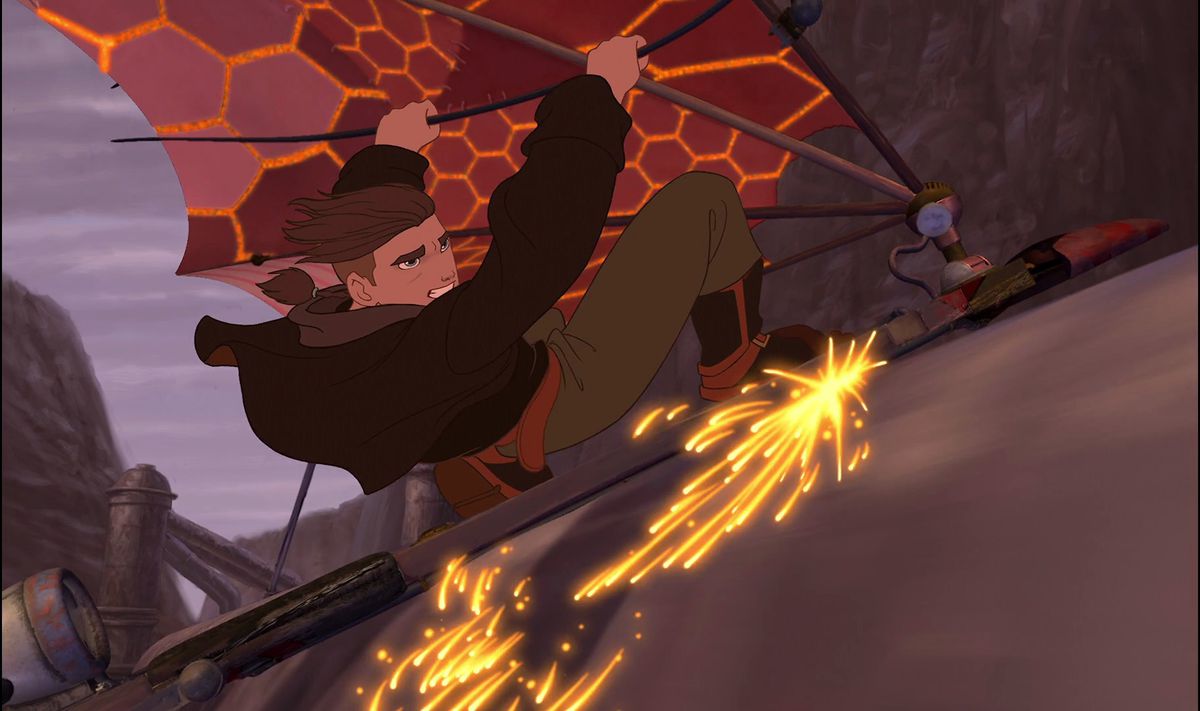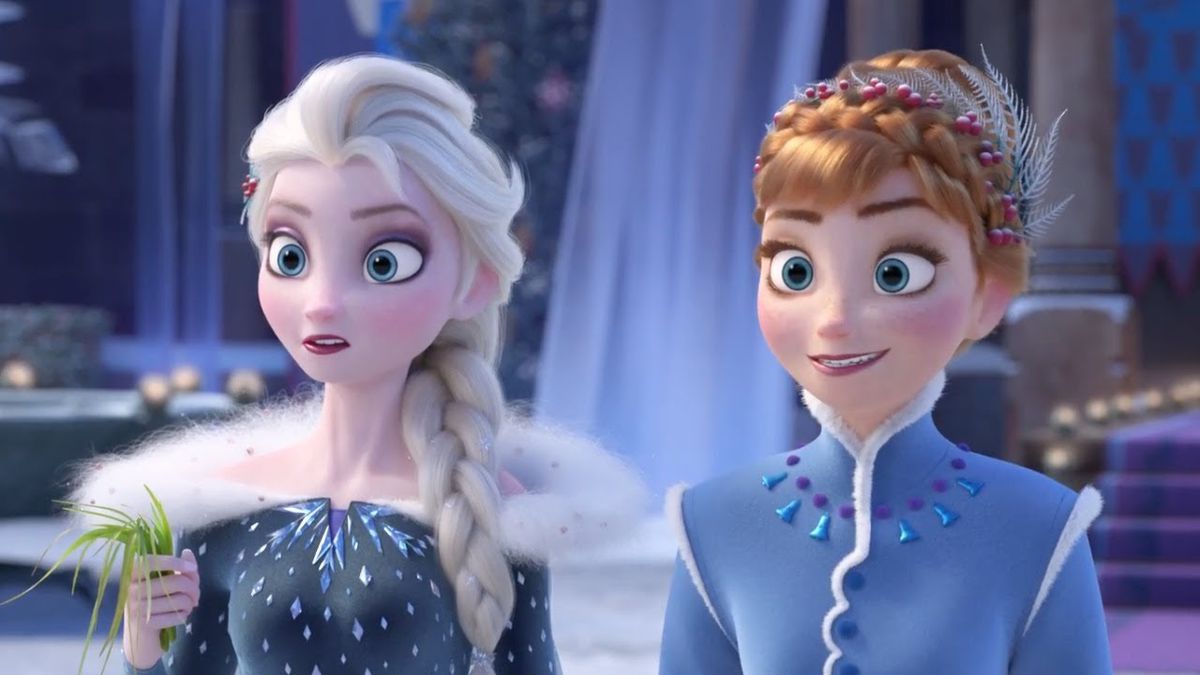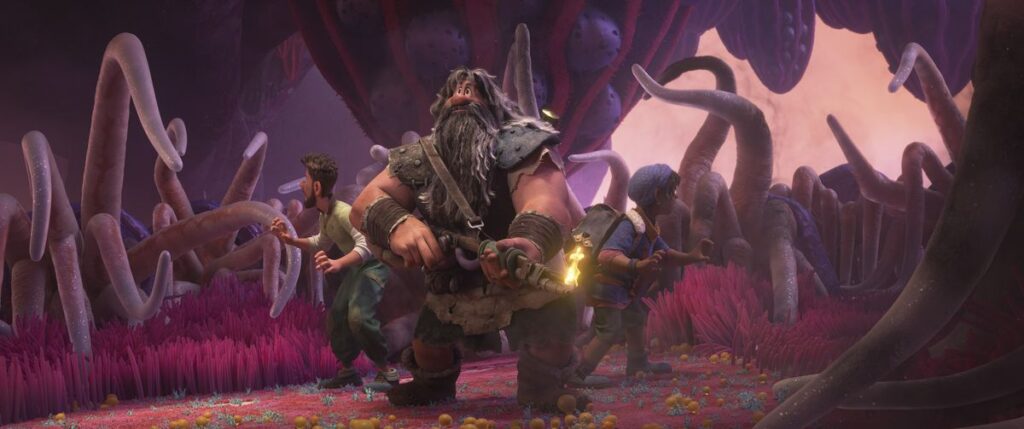For most of the past 20 years, Disney has dominated the Thanksgiving box office, with movies like Moana, Tangled, and Toy Story 2 all strategically held for November release. At first glance, it looks as if Disney did it again in 2022: The company took the top two box-office spots for the holiday week. But while Black Panther: Wakanda Forever is a clear holdover success, still the top theatrical release weeks after its launch, things are less rosy for its Disney stablemate, Strange World. The newest movie from Disney Animation managed to bring in just $12 million over the weekend, for a five-day total well under $20 million. (By contrast, the Thanksgiving weekend record-holder, Frozen, made $93 million on its opening weekend — and even the comparative Pixar flop The Good Dinosaur managed a $55 million domestic Thanksgiving opening.)
It’s as if this new fantasy adventure flopped as some kind of perverse 20th-anniversary tribute to Treasure Planet, which came out over the same holiday weekend in 2002, and also failed to clear that low $20 million bar. That’s rare for Disney theatrical animation in general: Movies that eked out bigger first-weekend numbers include the studio’s instantly forgotten 2004 singing-cow musical Home on the Range and the nearly unwatchable 2005 CGI feature Chicken Little. Plenty has changed in animation over the past two decades, but Treasure Planet, Strange World, and the 2001 fantasy-adventure film Atlantis: The Lost Empire (a bit more successful, but still considered an also-ran) make the case for one constant: Disney Animation doesn’t do well with fantastical adventure cartoons. But why?
The simple answer could be the movies themselves. None are destined for the Disney Animation pantheon, and Treasure Planet in particular uses considerable visual imagination to prop up some blandly adapted characters, ultimately failing to rethink its famous source material. But all three have their charms, including design work that makes them impressive big-screen experiences. (Unlike, again, Chicken Little.) Clearly quality isn’t the only factor. And there are appreciative subsections of Disney fandom who fondly admire Treasure Planet’s old-fashioned yarn-spinning, and/or Atlantis’ blocky Mike Mignola designs. Strange World speaks its environmental themes a little too clearly and obviously at times, but it’s a playful sci-fi exploration with a cool twist.
Image: Disney
It’s possible that the visual elements distinguishing these movies are exactly what’s helping alienate them from general audiences. All three films could be described as retro-futuristic: Treasure Planet combines alien worlds with Robert Louis Stevenson’s beloved 19th-century pirate novel; Atlantis is set in the early 20th century, involving the discovery of a timeless energy source; and Strange World uses a pulp-adventure framework that includes both old-fashioned farming and super-advanced airships.
Animators love these kinds of retro-futurist worlds, packed with art deco cities, kaiju-like creatures, and soaring dirigibles. Steampunk and spacepunk offer a sense of animation’s limitless possibilities, including the ability to create and populate worlds on a scale that simply wouldn’t be feasible or convincing on a live-action budget. It’s probably no coincidence that both Treasure Planet and Strange World include a shapeshifting blob as a supporting character: Both characters read as eager attempts to push beyond the usual cute-animal sidekicks and into more imaginative, flexible, change-driven realms.
But for general, contemporary audiences, the retro-futuristic aesthetic has never really taken hold of the popular imagination, whether it’s infused with steampunk technology, sci-fi ideas, or pulp-magazine adventure. Audiences flock to fantastic adventures in straighter historical settings, from Raiders of the Lost Ark to The Mummy, but movies like Sky Captain and the World of Tomorrow or Wild Wild West couldn’t find the same footing.

Image: Disney
Animators’ interest in pursuing this specific kind of old-timey adventure story points to another potential problem. It’s the kind of material traditionally marketed toward boys, even if it obviously isn’t exclusively enjoyed by them. But Disney periodically seems to be in denial over (or just impatient about) how much of its fan base is made up of younger girls, and how many of its biggest successes come when it openly aims stories at them.
Encanto, Moana, and Frozen aren’t “girl-only” movies, but broadly speaking, Disney still markets its princess-style movies clearly, with a specific demographic positioning in mind. It’s understandable that the studio’s creative teams want to play around with genre and setting, and escape the established Disney formulas; a studio cannot survive on princesses alone. But the majority of animated Disney films that have achieved creative and commercial success have revolved around memorable female characters — characters with broader appeal and more relatable problems than the generations of daddy issues at the heart of Strange World. At the same time, while Strange World is neat-looking sci-fi, it can’t really compete with Star Wars’ excitement or Marvel Studios’ character library.
But franchises and past victories aside, the problems with Treasure Planet and Strange World do still stem from the movies themselves. Before their respective releases, they both looked like big swings from Disney — refreshing changes of pace that audiences would likely follow, at least to some degree, based on the Disney reputation. In retrospect, they look more like harbingers of bumpy transition.

Image: Disney
Atlantis in 2001 and Treasure Planet in 2002 inadvertently offered a one-two punch confirming that the ambitions of Disney’s later-’90s movies would not always produce financial success on the level of its early-’90s smashes. The smaller, looser, more idiosyncratic comedy of The Emperor’s New Groove and Lilo & Stitch proved more appealing to audiences than the more abstract draws of big, strange, unfamiliar worlds. That same dynamic may be playing out in a more extreme way in a still-depressed post-pandemic box-office environment, where audiences are looking for familiarity, comfort, and fun rather than novelty or narrative challenges. The pandemic seems to have hastened another period of instability for studios, where parents have plenty of home-viewing options with their kids, and even something as excellent and eventually beloved as Encanto isn’t likely to make Frozen-level money.
Disney Animation’s unofficial trilogy of adventure flops are weirdly perfect representatives of these periods of uncertainty. All three attempt to point a new way forward, stylistically and/or thematically, for their medium of all-ages animation. And all three wind up feeling muddled. Atlantis is something between small-kid-friendly adventure and a harder-edged story aimed at teen viewers. Treasure Planet lies between the expressiveness of hand-drawn animation and the computer augmentations that were cutting-edge when it hit theaters. And Strange World hovers between the cleverness of its environmental allegory and the clunkiness of its familial drama. (The characters say “legacy” so often, you can picture it underlined on the filmmakers’ whiteboard. It’s the same overly emphatic writing-to-theme that Raya and the Last Dragon did with the idea of conflict and greed breaking an entire world.)
In other words, all three of these movies were caught between retro elements and futuristic designs, rather than truly melding the two. The best recent Disney animated stories have balanced familiar tropes and formulas with innovation, whether that meant executing familiar material with unusual depth of feeling (Moana) or allowing the story to get a little messy in service of subverted expectations (Frozen). Strange World has a different lineage, noble in its way and befitting its sci-fi storytelling: It’s a hybridized experiment that’s just a little too ungainly to inspire uncomplicated love. Maybe in another 20 years, Disney Animation will figure out how to soar with this kind of adventure story, without such a bumpy landing.

